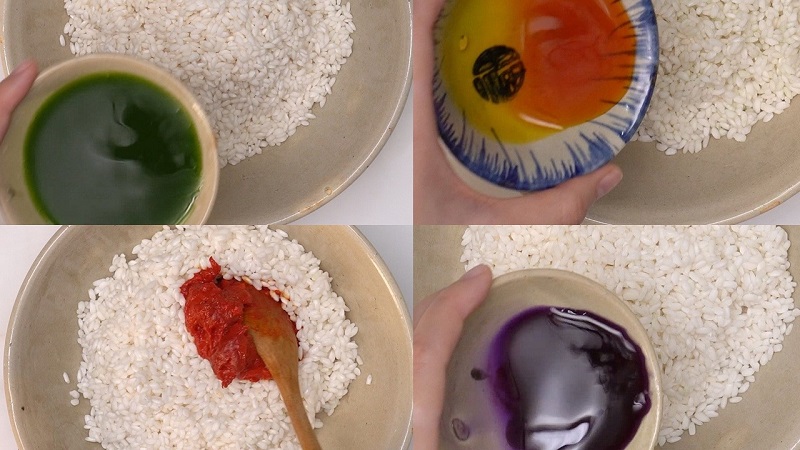Xôi Ngũ Sắc
1. Overview
Five-colored sticky rice, or xôi ngũ sắc, is a visually stunning and culturally rich dish commonly prepared by ethnic communities in Bắc Kạn, especially the Tày people. More than just food, it represents harmony, tradition, and the spiritual beliefs of the local people, typically served during festivals, weddings, and Tet (Lunar New Year).
2. Characteristics
-
Colors: Traditionally includes five natural colors – white, red, green, yellow, and purple. Each color symbolizes one of the five elements in Eastern philosophy: Metal, Wood, Water, Fire, and Earth.
-
Texture: Made from glutinous rice (nếp nương) grown in the mountains, the sticky rice is soft, chewy, and fragrant.
-
Aroma: Infused with subtle scents from the natural leaves used for coloring, such as pandan, magenta leaves (lá cẩm), turmeric, and gardenia.
3. How It's Prepared
The process of making xôi ngũ sắc is labor-intensive and thoughtful:
-
Soaking rice: The glutinous rice is divided into portions and soaked overnight with natural plant-based dyes.
-
Natural coloring:
-
Purple: From lá cẩm (magenta plant)
-
Red: Often made from gấc fruit or red beet
-
Yellow: From turmeric or gardenia seeds
-
Green: From pandan or young leaves
-
White: Untinted, showcasing the rice’s original color
-
-
Steaming: After soaking, the rice is steamed in a traditional bamboo steamer over wood fire to preserve its natural aroma.
4. Cultural Significance
To the Tày and other ethnic minorities in Bắc Kạn, xôi ngũ sắc is more than just a dish:
-
Spiritual meaning: The five colors symbolize balance and harmony in life.
-
Ceremonial role: It’s an essential dish during community rituals, harvest festivals, and weddings.
-
Cultural identity: Making and sharing xôi ngũ sắc helps preserve and pass down cultural traditions from generation to generation.
5. How to Enjoy
Xôi ngũ sắc is best enjoyed warm, served on banana leaves for an added earthy aroma. It pairs well with grilled meats, roasted sesame salt, or simply as a snack during festivals. Tourists to Bắc Kạn often find it a meaningful culinary experience that reflects both the natural beauty and the cultural richness of the region.




